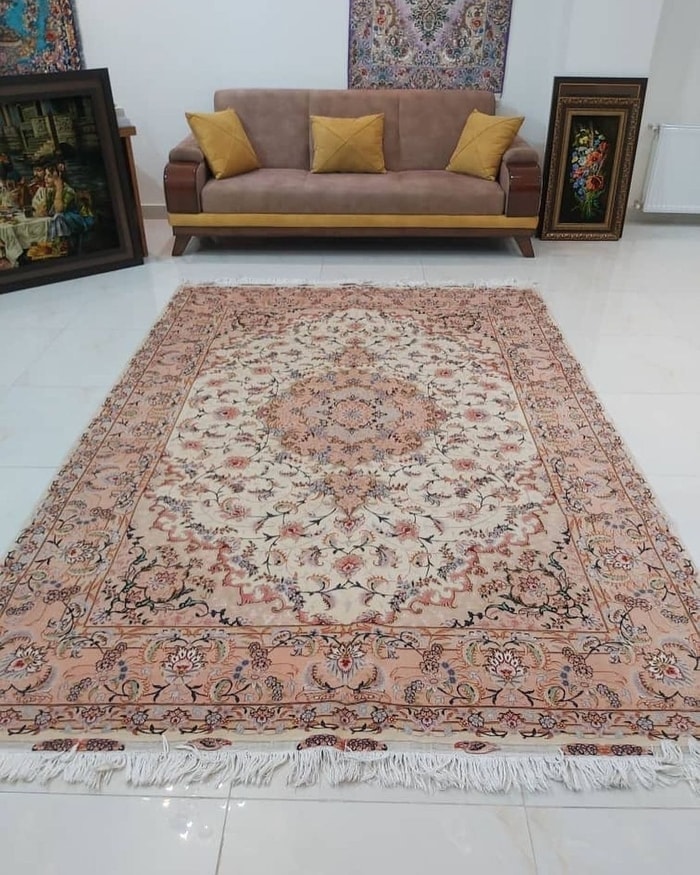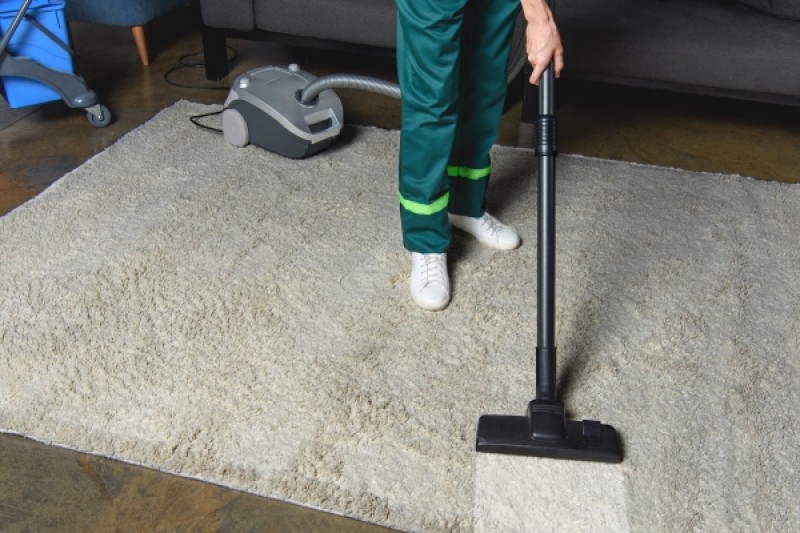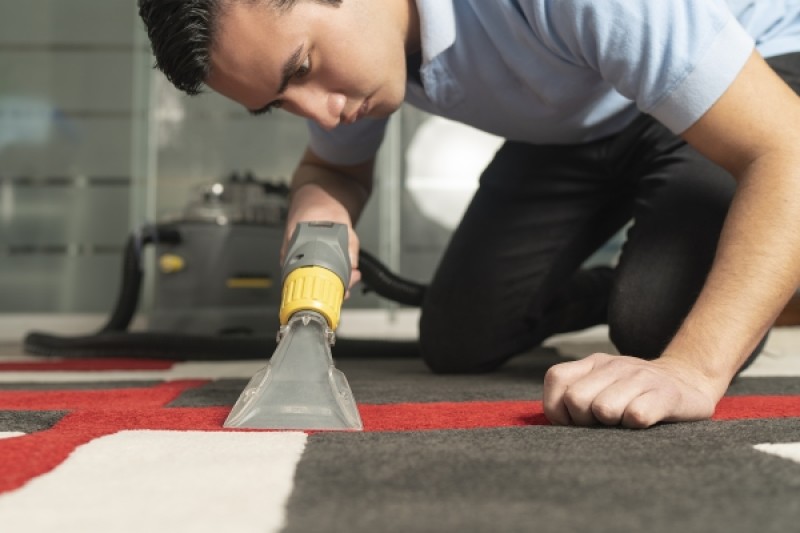Oriental rugs and Persian carpets add color and splendor to any home. These highly decorated and expensive furnishings are crafted from exquisite natural materials, including vintage silks, and delicate wools, making them highly prized and collectible. Due to their value and materials, the cleaning of Oriental rug cleaning is a highly specialized service.
If rug cleaning is not carried out correctly, it could result in thousands of dollars in damage. Therefore, when searching for Oriental rug cleaning near me, we need to be confident that the chosen carpet cleaning company will deliver top-class results without causing harm to any prized Oriental rugs and carpets.
Oriental Rugs and Persian Carpets are Valuable
Oriental rugs, Persian carpets, and rugs from Turkey and Nepal are handmade or woven on a loom. Often, each rug will have taken many hours to create using traditional manufacturing methods that have been highly prized around the world for centuries. Oriental rugs and Persian carpets can be some of the most expensive forms of carpeting in the world.
Depending on the size, age and provenance, you can easily pay around $20,000 for a vintage Persian rug. Although not all handmade oriental rugs or Persian carpets may reach this price, if you have an Oriental rug or Persian carpet in your home, it will likely have cost far more than a modern mass-produced equivalent
Oriental Rug Cleaning is a Specialized Cleaning Service
No matter how carefully you treat your oriental carpet, accidents can still occur. Drinks and food might be spilled, causing staining. Additionally, if you have pets, pet staining is inevitable sooner or later. This means that if your rug experiences any form of staining, you will need to clean it. Moreover, if your rug becomes dirty and discolored over time, cleaning will rejuvenate tired colors and restore it to the top condition you can be proud of.
The Problem with Cleaning Oriental Rugs
The problem with cleaning Oriental rugs and Persian carpets is that these sophisticated carpets are extremely easy to damage during the cleaning process. Therefore, you do need an expert Oriental carpet cleaning specialist who thoroughly understands how to clean them safely. Finding professional Oriental rug cleaning near me is often challenging because many carpet cleaning companies lack the expertise to handle these valuable furnishings.
Many owners struggle with the dilemma of either leaving the carpet dull, discolored, and dirty for fear of ruining the delicate texture or risking potential damage caused by the cleaning process. If a wine stain or other spillage stains the carpet, it may be tempting to try and remove it yourself by spot cleaning the area. However, this is a mistake. Unless you know how to do this safely, you risk removing the color and spreading the stain, which can spoil the overall appearance of your oriental rug and depreciate the value.
How to Keep Oriental Rugs Clean?
Regular vacuuming helps remove surface dust and dirt. Adding baking soda to the carpet and then vacuuming it off will also help keep the colors bright and new; it can be effective in some cases. However, for carpet staining, you need to be extremely careful.
Some rug materials can be spot cleaned with cold water, and adding white vinegar may be suitable as well. However, adding liquid and rubbing a stain may cause the stain to spread. If you don’t know exactly what you are doing, you could make the appearance of a stain far worse and may cause lasting damage to the delicate fabrics of an Oriental rug. The safest way to clean an Oriental rug or Persian carpet is to hand your precious rug over to a professional service.
How Often Should You Clean Your Persian Rug?
Most of us probably wait long enough to have our carpets professionally cleaned. While vacuuming at home is the best way to get rid of surface soil and other dry debris, you can’t vacuum away liquid spills that have dried on your carpet, such as pet pee, coffee, soda, and vomit. As a general rule of thumb, every 18 months should be enough for professional area rug cleaning. However, if you have pets that make messes on your carpets, spills that you can’t get rid of with a towel and a wool-safe approved spotter, or children who are prone to spills, every year carpet cleaning is recommended.
PristineGreen Oriental Rug Cleaning Service
PristineGreen Oriental Rug cleaning service is a specialized carpet cleaning company that delivers impeccable cleaning results for any Oriental rug, Persian Carpet, or any other delicate handmade carpet. We understand the challenges associated with cleaning delicate and expensive carpets and rugs, and we can undertake even the most demanding aspects of working with expensive vintage and irreplaceable materials.
At PristineGreen Services, we treat your furnishings with the respect they deserve. We carefully apply our non-toxic, safe cleaning materials slowly and safely to your valuable Oriental rug or Persian carpet. This slow process is carried out with painstaking attention to detail by our team of specialist technicians. For you, the customer, it is easy. PristineGreen Services is your local drop-off rug cleaning service and will come to your home to collect your Oriental rug.
We take it back to our workshop, where we can apply the right specialist cleaning chemicals and techniques to gently restore the bright, natural colors. Our rug cleaning techniques are gentle and effective. Oriental carpet cleaning is good for the carpet’s longevity, as it ensures that your carpet stays in fantastic condition and feels as soft and luxurious as it looks for years to come. Once the cleaning has been fully completed, we will return the carpet to your home two weeks later. Pick-up and drop-off are free, so there are no hidden extras to the service.
PristineGreen Cleaning Services is a Company You Can Trust
PristineGreen Cleaning Services is a boutique company based in Brooklyn, New York, covering all districts and areas, including NYC, Manhattan, Queens, Bronx, and Long Island. As a local cleaning service company, we provide a personalized experience to each customer and take great pride in our growing reputation for excellence. PristineGreen Cleaning Services serves a diverse range of customers, including some of the best hotels in New York. However, we are equally committed to providing any type of cleaning service for private customers, meeting their needs whenever required.
Give us a call today, for your professional rug cleaning.
Frequently Asked Questions
Due to their value and materials, the cleaning of Oriental rug cleaning is a highly specialized service.
As a general rule of thumb, every 18 months should be enough for professional area rug cleaning.
The problem with cleaning Oriental rugs and Persian carpets is that these sophisticated carpets are extremely easy to damage during the cleaning process.
If you don’t know exactly what you are doing, you could make the appearance of a stain far worse and may cause lasting damage to the delicate fabrics of an oriental rug.
We carefully apply our non-toxic, safe cleaning materials slowly and safely to your valuable Oriental rug or Persian carpet. This slow process is carried out with painstaking attention to detail by our team of specialist technicians.
PristineGreen Cleaning Services is a boutique company based in Brooklyn, New York, covering all districts and areas, including NYC, Manhattan, Queens, Bronx, and Long Island.
Oriental carpet cleaning is good for the carpet’s longevity, as it ensures that your carpet stays in fantastic condition and feels as soft and luxurious as it looks for years to come.
Once the cleaning has been fully completed, we will return the carpet to your home two weeks later. Pick-up and drop-off are free, so there are no hidden extras to the service.




